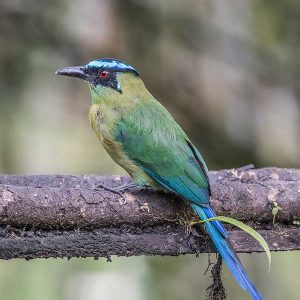
Andean Motmot is among the amazing species that make Colombia the country with the highest diversity of birds in the world. (Photo courtesy of Charles J. Sharp, Wiki Commons)
Saving the world would seem like something to announce from the rooftops.
Doesn’t always work that way.
Nestled in the green valley between two mountain chains in southern Colombia lies the city of Cali, an incredibly busy place this week. Cali is hosting a meeting of many of the world’s nations that are collectively making decisions on how to address the precarious drop in abundance and diversity of life on planet earth.
Colombia is a fitting place to discuss biodiversity. The South American country has the highest number of bird species of any country in the world. These include the Andean Motmot, Blue-gray Tanager, and Rufous-tailed Hummingbird among the showy examples. And Colombia ranks second in plants, butterflies, freshwater fishes, and amphibians.
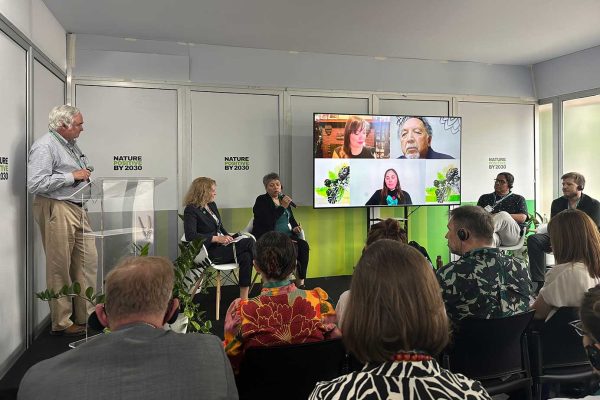
A panel discussion with members of the Seal River Watershed Alliance and other Indigenous groups at the formal Blue Zone at COP16 in Cali, Colombia. (Photo courtesy of Kohl Barrault)
COP16 (the 16th meeting of the Conference of the Parties of the signatories of the global biodiversity treaty) is currently underway. Meeting halls, pavilions, receptions, hotels, and restaurants in Cali are filled with top officials of environmental agencies of the world’s nations; heads of Indigenous, state, provincial, and city governments; CEOs of conservation nonprofits, including some of the world’s largest; well-known scientists, and even some artists and other celebrities who support conservation.
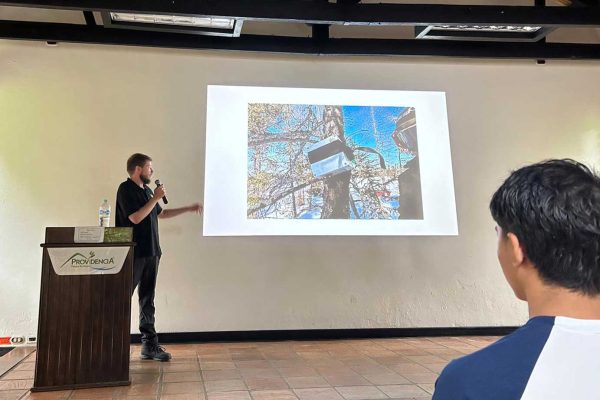
The Seal River team gave several presentations in the Green Zone at COP16, including this one at an ecopark. (Photo courtesy of Lane Nothman)
One delegation of participants in COP16 is among the most important to the future of the planet. Yet this group is little known to most of the thousands of COP16 attendees. Seven Indigenous leaders, youth, and elders are part of the Seal River Watershed Alliance. They are from four First Nations that together are moving forward a plan to protect the 12-million-acre Seal River Watershed of northern Manitoba.
The Seal River Watershed is a region almost half the size of the entire state of Maine (or the size of the entire country of Costa Rice)!
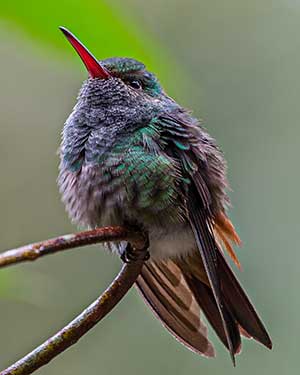
Rufous-tailed Hummingbird, a stunning but common bird around Cali, Colombia. (Photo courtesy of Andrew Morffew, Wiki Commons)
This amazing place provides food, shelter, breeding habitat, and other life-sustaining resources to literally tens of millions of birds. Some of them are just arriving around Cali this week and are familiar to Maine birders: Lesser Yellowlegs, Ospreys, and Yellow Warblers, for instance. Seal River Watershed also supports polar bears, belugas, caribou, seals, moose, fish, wolves, wolverines, butterflies, beetles, plants, fungi, and other forms of biodiversity. Factor in the billions of tons of carbon stored in the forests, peatlands, and under permafrost and its thousands of lakes and ponds—plus the fact that the entire watershed is undammed and free flowing into Hudson Bay. Incredible!
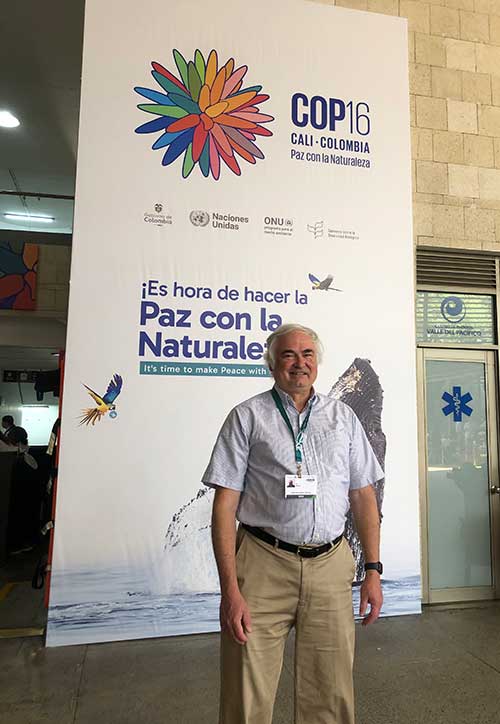
Jeff Wells (one of the authors) at COP16. (Photo courtesy of Poly Martinez)
How many other places of this size and impact do you know of anywhere on Earth that are actively being moved toward protection?
The seven-member Indigenous delegation from the Seal River Watershed Alliance at COP16 in Cali this week are making among the greatest contributions to addressing our biodiversity crisis. They are speaking in the meetings of the formal UN negotiation area called the Blue Zone. They are participating in events across the less formal, open-to-the public portion of COP16 called the Green Zone where they are visiting Colombian ministries and museums, speaking at schools and libraries, visiting eco-parks. Everywhere, they are spreading the word about their work and building global recognition and support for the conservation of the Seal River Watershed.
In the years to come, we hope that those who meet these representatives will look back and remember how fortunate they were to know some of these heroes for the world. We hope so.
— Jeff & Allison Wells










Leave a Reply